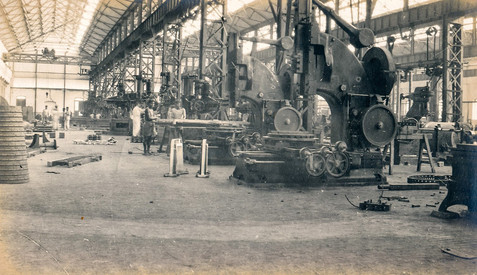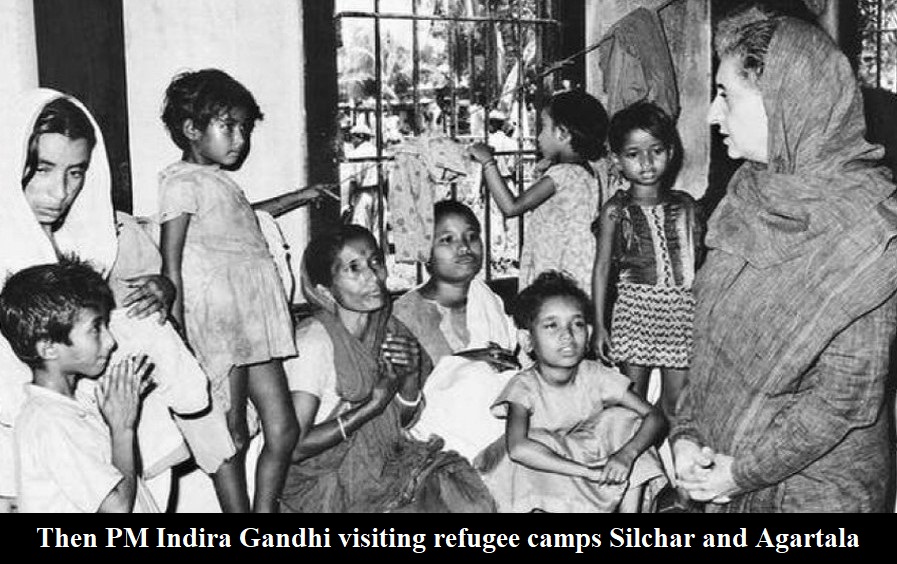Decline of Kolkata Or (Bengal's Fall from Grace)
- Utkarsha Kotian
- Sep 7, 2020
- 7 min read

“What Bengal thinks today, India thinks tomorrow.”
These words said by Gopal Krishna Gokhale more than a hundred years ago, accurately reflected the aspirations of Kolkata and Bengal at the time.
Bengal was home to some of the subcontinent’s greatest intellectuals
Calcutta, the Empire’s second city, was once an economic powerhouse
However, in the present day, it is the other way round. What India thinks today, Bengal thinks tomorrow — that is, if it thinks at all.
The statistics on ruin, decline, and despair are overwhelming
On a GDP per capita basis, the state went from being 1st in all of India in 1960, to 23rd in 2019. It went from making up 24% of the industrial output of the country in 1947 to a paltry 5% by 1998. Social indicators are not any good either. The state ranks 28th out of all the other states and UTs in terms of HDI, a figure which is below even the national average.
All of this reflects on the abysmal state of infrastructure in Kolkata
This begs the question – what led to the decline of Kolkata, and the Bengal region in general. How did such an industrious conglomeration turn into the urban hellscape it is today? Let us attempt to find out.
Two brutal partitions
Bengal was subjected to partition twice in its colonial history, starting in 1905- when it was split into two administrative regions of a Hindu majority west and a Muslim majority east respectively. This permanently fractured the society along communal lines and was a contributing factor to the second partition which happened in 1947 – this time with the Muslim majority eastern half going to Pakistan. This cut off India’s Bengal from the vast hinterlands of its eastern half – containing vast resources and human capital which had powered Calcutta’s industries for more than a century. The oncoming refugee crisis and communal riots only worsened the situation.
Ensuing death of the jute industry
The jute industry had once paved the way for industrialization throughout Calcutta and Bengal.
Angus Jute Mill sometime in the 1920s in Calcutta
At its height, it employed over 350,000 workers, more than 4 million peasants, and provided 20% of India’s foreign earnings. Even as far back as the early 20th century, the proceeds from processed jute goods alone amounted to £35 million every annum.
However, the 1947 partition had a devastating impact on the industry. It meant that 75% of the jute growing areas were in Pakistan, but all 106 mills, bailing centers, and export hubs were in India. Initial agreements between the two rivaling dominions broke down and soon the industry began its descent towards stagnation and eventual death.
The remnants of the Kolkata’s once-bustling jute mills
Faulty management from New Delhi
The central government lead by the INC for the first 30 years of independence contributed to the decline as well, starting with the freight equalization policy. Introduced in 1952, it stated that a factory could be set up anywhere in India and the cost of transporting the minerals would be subsidized by the government. In one stroke, the locational advantage of mineral-rich states like West Bengal, Bihar, Odisha, Madhya Pradesh, etc. was greatly reduced, and businesses started preferring coastal regions and emerging centers elsewhere in the country. This can be seen from the fact that between 1961 and 1971, only 200,000 new jobs were created in Calcutta’s metropolitan region, while its population grew by 1,355,000. The incentive was simply not there.
Another instance of mismanagement was the refugee crisis which occurred after the Indo-Pakistan war of 1971. While India decisively won the war and helped in creating Bangladesh, it also led to an approximate 10 million refugees fleeing into neighboring West Bengal and Assam. This created enormous pressure on the already strained resources of the region.
Rise of Naxalism
The years of economic mismanagement by the central and state governments gave rise to ultra-left factions within the state. Kolkata and the rest of West Bengal were very much already in a decline when the first non-Congress government came to power in 1967 - the United Front.

Soon, Naxalites – a group of self-styled Maoist revolutionaries, led by a section of the CPI(M) started gaining a strong presence throughout the state and within student movements in Calcutta. They declared a dictum for Naxalites to assassinate any individual 'class enemies' like businessmen, university teachers, politicians, landlords, etc. This animosity eventually took the form of militant trade unionism, while the cases of violence, murder, vandalism, etc. greatly increased.
"As the attacks skyrocketed", recalls industrialist S K Birla, "many responsible owners gave up on business and transferred ownership." "There was no security. In every flight that we took out of Kolkata, we carried a bagful of belongings, including jewelry. It was the worst of times," another industrialist recalls.
According to data, there were 179 strikes and 49 incidents of lockout in factories in 1965. By 1970, the comparative figures were 678 and 128, respectively.
As industries started fleeing, the problem of unemployment worsened, which further added fuel to the fire. On the other hand, the ruling United Front remained split on ways to deal with the rising insurgency.

Hence, exceptional misfortunes were witnessed in the 25 years between 1947 and 1972. The once prosperous Calcutta was now in a clear state of chaos, all the while militant insurgencies grew stronger. However, the great decline had just started.
Jyoti Basu comes to power in 1977
The Left Front led by CPI(M) co-founder Jyoti Basu came to power in the 1977 state elections. It started its tenure by focusing on agricultural and land reforms. Initially, the first decade of communist rule saw grain production dramatically shooting up, registering average growth rates of 5.81 % from 1980 to 1990. However, the laws of diminishing returns soon set in, and the growth fell back to 2.13% from 1990 to 1995.
Secondly, a new industrial policy was introduced in 1978 which promised to encourage small industries and fix the industries throughout the state. This policy was also not successful in reviving the situation. In 1977-78, West Bengal was number two after Maharashtra in terms of employment and value-added. By 1987-88 Maharashtra was still number one but West Bengal fell to fourth in terms of employment and fifth in terms of value-added.

Politics of terror and murder dominated much of Left Front's 34 years long rule
In the early 1990s, a change started coming over the party’s politburo. The USSR had collapsed, communist China was rapidly industrializing, while India had just decided to go ahead with its liberalization reforms. All of this allowed Basu to draft a new economic policy in 1994, which sought to encourage private investments and entrepreneurship. However, this too failed. In terms of ex-factory value-added output, West Bengal’s share was 6 percent in 1991, which went down to 3.9 percent by 1999-2000.
Buddhadeb's attempts to reform boomerangs
When Jyoti Basu resigned after 23 long years in 2000, Buddhadeb Bhattacharjee took over as Left Front’s second CM in the state. Inheriting a deeply stagnated and troubled economy, he knew he was racing against time.

Acting accordingly, he first attempted to change the unproductive work culture through various slogans and public campaigns, facing backlash from his own party workers who moved to join other parties. He helped in formulating the 2003 Bengal IT policy and was later affirmed the best chief minister by Azim Premji. The sector witnessed a 70% growth in the state between 2001-05, albeit on a very low base. The reforms seemed to be materializing, and Bhattacharjee used this leverage to help the Left Front sweep the 2006 elections.
Upon bagging the ambitious Tata Nano project for his state in Singur and getting elected for another term, he asked reporters “How do you like the beginning?” Little did he know that this signature project would mark the beginning of the end of the Left Front's 34-year rule in the state.
In 2007, upon the state government’s failure to acquire land for a special economic zone (SEZ) in Nandigram, an emergency developed in the region and 14 people died in a police shooting.

The CBI later held the Bhattacharjee government responsible for the shootings, allowing rival Trinamool’s Mamata Banerjee to gain momentum and spearhead protests against Nano’s Singur plant. Many other instances of violence and murder perpetrated by CPI(M) men only intensified the protests. By 2008, a whopping 1,800 crores had already been invested in the plant which was 80% ready. However, the company was unable to handle the fierce opposition and finally announced the relocation of its plant to Gujarat, a state which later went on to become one of India's major automobile manufacturing hubs.
Bhattacharjee’s reforms had failed, and in the elections that followed in 2011, Mamata Banerjee’s Trinamool came to power. The irony here is that the reforms which were supposed to revitalize Kolkata and Bengal, ended up triggering events that led to its stagnation yet again. Industrialization was put on the back burner yet again, and in the end, it was only the people who suffered.
Is the decline reversible?
The decline is especially tragic because the city already had a fairly prosperous societal, economic, and industrial base in 1947 and could have leveraged in its many already established industries to grow further. The city also missed out and remained largely untouched by the economic boom that followed after the 1991 liberalization. The other two big cities, Delhi and Mumbai, rapidly developed into the grand metropolises they are today, while Kolkata stagnated and declined further. It continued to live in the shadow of its former self as various sectors from even the newly emerging centers in Bangalore, Ahmedabad, Hyderabad, etc. overtook Kolkata's.
Debates about Kolkata's or Bengal's former glory are immaterial because the basic ingredients which helped in creating that past in the first place - vibrancy, robust growth, industrial and human capital, social changes, etc. are missing. Before a common consensus for change can even develop, it is important for the everyday Bengali or Kolkatan to let go of the colonial hangover, look beyond the past, and acknowledge the decay. Only then can the focused social and economic policies develop. It may take years or decades of a disciplined approach to reverse the great decline, but it is a goal worth pursuing.
References
.png)
















































































